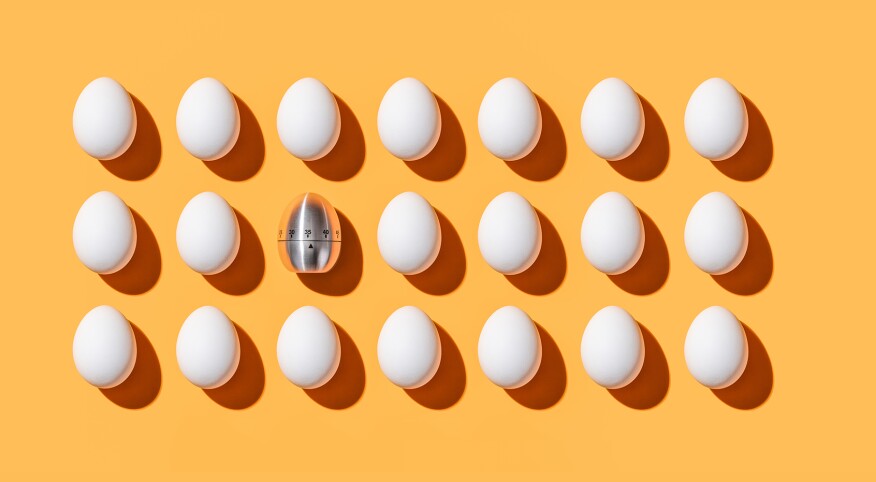I recently returned from my son’s three-day soccer tournament and had limited time to prepare for the youth group I lead in my home. I planned to make several boxes of mac and cheese for the hungry teens who were coming, along with hot dogs and brownies. I went to get some extra butter out of the garage fridge and noticed it already had expired. It looked and smelled OK, but I wondered if it was safe to eat. After searching to find the answer, I was relieved to learn it was.
This wasn’t the first time I found expired food and wondered if it was safe to consume. It happens often. For the most part, our family assumes that if it looks, tastes and smells OK, then it’s probably fine. We just don’t like waste. But I’m extra cautious when it comes to foods that seem questionable, so I tend to throw them out just to be safe. I absolutely hate to do this. So, I decided to find out which foods are actually safe to eat after their expiration dates.
I was surprised to learn that most expired foods are safe to eat, and that much of the food thrown away is from people who are confused by the various expiration date labels. There are many types of labels you will find on a variety of products — such as “Best by,” “Sell by,” “Best if used by,” and so on. Consumer Reports states:“Ninety percent of Americans misinterpret the dates on labels, according to the Natural Resources Defense Council (NRDC), and they throw out food that could still be consumed or frozen for later use.”
The U.S. Food & Drug Administration reports an astounding claim: “Between the food industry and consumers, Americans are throwing out about a third of our food — about $161 billion worth each year.”
Whoa.
The expiration dates we see on foods are simply the manufacturer’s best guess as to how long the food will taste fresh, but they have nothing to do with the safety of food consumption. Surprisingly, there are no federal regulations on any food — except baby formula, which requires specific “Use by” dates the consumer must follow.
This leaves us to make our own decisions. Oftentimes, food will show signs of spoilage by having a nasty smell, a change in color or texture, and a terrible taste, which clears up any confusion. No one wants to get sick from rotten food that can have mold, yeast and bacteria. But if you’re still unsure, the general rule is always best: “If in doubt, throw it out.”
That being said, we surely don’t want to waste a third of our food and our grocery bill, so if we store food properly, most of it can last much longer than the dates suggested. The key is proper storage. Thankfully, the USDA’s Food Safety and Inspection Service, along with Cornell University and the Food Marketing Institute, developed the FoodKeeper app that offers detailed information on how to best store foods to prolong their freshness.
Most foods in your pantry are safe to eat indefinitely, as long as the packaging isn’t damaged. Canned goods can last years past their suggested expiration date. Pasta, granola bars, chips, cookies, cereal and crackers will last longer too, although they might lose their freshness and taste stale.
Since I checked on my butter, I also wanted to learn how other food staples fared. I’m especially wary of dairy products, but many last much longer than their printed dates with proper storage and refrigeration (37 degrees is ideal).
Eggs stay fresh three to five weeks past the packing date if they are refrigerated in their original carton. To find the pack date, look for a three-digit number from 1 to 365. The numbers go according to the days of the year. (Example: 005 is Jan. 5.)
Milk lasts several days after the “sell by” date, as long as it’s pasteurized milk and stored properly. I’ve experienced milk to be fickle — sometimes smelling rancid before the date, and at other times keeping fresh for a week past the date. Just make sure you take a whiff before you pour. Your nose will know.
Yogurt lasts up to a month past its “best by” date, as long as it’s unopened and stored in the refrigerator properly. If the yogurt has been opened or there is fruit on the bottom, yogurt will not last as long.
Cheese lasts up to four months past the “best by” date, depending on the cheese. The harder the cheese, the longer it will keep. The softer cheeses will mold faster due to the moisture they hold.
Sour cream lasts up to three weeks past the “sell by” date when stored in the refrigerator properly.
Spices never really go bad, but they will lose their potent flavor over time. Dried herbs last one to two years, ground or powdered spices last two to three years, and whole spices up to four years.
Coffee (ground or whole bean) lasts up to nine months past the printed date if unopened. If opened, it still lasts up to six months.
Tea is still good for up to two years past the “best by” date as well.
And did you know that frozen food can last indefinitely? It might lose its fresh taste, but bacteria and pathogens cannot live in freezing temps. I’ve thrown out countless foods from my freezer because I thought they were inedible.
Just a little food for thought. 😉










